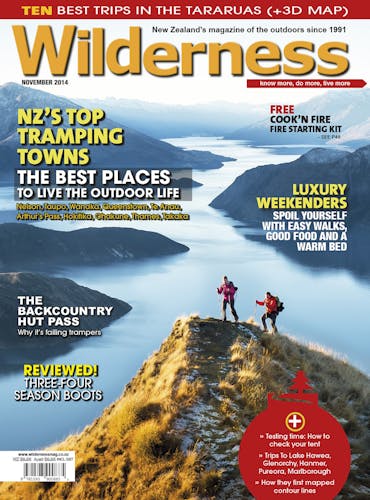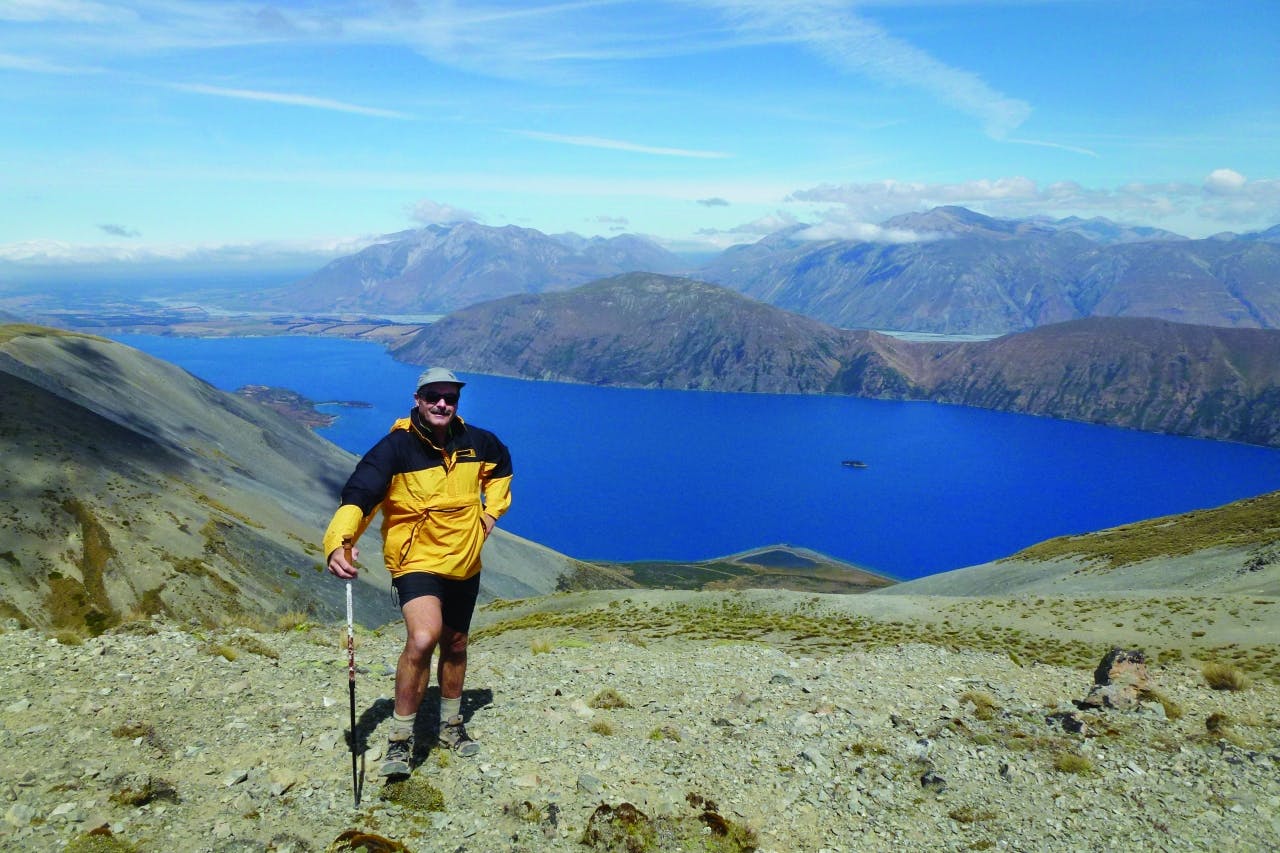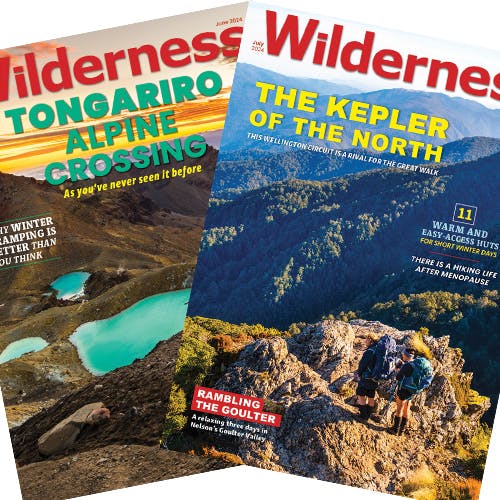DOC’s director general speaks to Wilderness about the biggest challenges facing the department and why he’s had to move away from a ‘DOC knows best’ attitude
About a year ago, Lou Sanson walked into a department of chaos. The chaos wasn’t due to his appointment – most people Wilderness speaks to applaud the decision to put him in charge. But the department had just gone through its umpteenth restructure and a frozen budget had led to staff cuts and loss of morale.
There was animosity within the ranks and doubt over whether the new structure would work.
In the past 12 months the department has expressed an interest in working with anyone who wants to help the conservation estate. It has close partnership ties with the likes of Air New Zealand and Fonterra and has released a fund to support volunteers working on huts, tracks, bridges and trapping on DOC land.
DOC has had to respond to several major storms that has caused huge destruction to the likes of Great Barrier Island and the West Coast.
In July, a State Services Commission review said DOC was struggling to implement its restructure changes in some areas. Sanson told national media at the time that the review was carried out in February and that the department had already sorted many of its problems and is now on track.
Lou, where is DOC now in terms of dealing with its restructure?
It’ll take three years to bed down this restructure, but already there have been vast improvements in relationships with local government and iwi. It’s fair to say there are issues we need to resolve over clarity of roles.
I felt staff animosity quite strongly in the first three months of the job – people had had enough of change, they wanted to be valued. We did lose a lot of corporate knowledge but enabled a lot of new blood to come through. You lose something, you also gain something – I think we’ve got the balance about right.
Has there been a cultural shift as well as a structural one?
What I inherited was an attitude of ‘we know best’; we were often difficult to deal with, we would often take ages to make our minds up and used a compliance focus over relationship solutions. These were the reviews of external reviewers and we’re keen to put that to bed. We had to lose the style of ‘DOC knows best’ and we needed to give a little to gain a lot more.
Are our backcountry huts safe from being pulled down or neglected?
On my watch I won’t remove any huts unless they have to be removed for safety reasons. We’ve set up a fund which will look at how we share the load. Many huts were put in there for deer stalking, so New Zealand has a wonderful network of huts. I grew up in Hokitika and have walked virtually every valley between Greymouth and Haast. Some of these huts, such as Ivory Lake Hut at the head of the Waitaha, are absolute treasures. From a young age I knew what it meant to have this network of wonderful shelters because we have this climate that can make tenting quite difficult.
If we go down the partnerships route for maintaining huts, is there a risk they may become exclusive?
Public access is number one – the concessionaire huts are privately owned, but the public huts of New Zealand are for the public. I can’t think of any case where a relationship with a business or organisation has led to exclusive use of a hut.
Are partnerships with private companies actually working?
The partnership with Air New Zealand has been successful because we’re bringing together the DOC logo with the koro and saying together we can do something better. And we’re now putting species back on to Great Walks and doing work with marine protected areas with Air New Zealand.
It’s the same with our partnership with Fonterra – we’re joining a vision to truly make farming sustainable and we’d rather work together with 10,000 farmers on that vision and 14,000 Air New Zealand customers on what makes New Zealand special.
This vision of commercial partnerships has led to growth in philanthropy, such as Neal Plowman putting $30m into completely restoring Rotoroa Island, and $23m into Abel Tasman to change the face of our most popular Great Walk. Gareth Morgan with his million dollar mouse and Sir Michael Fay with his vision for Great Mercury Island. We didn’t anticipate the growth of philanthropy but it’s exciting to see other people on board.
Are there any plans to do anything about the lack of facilities in the north?
We’ve felt it for some time, hence our initiative for Kauri National Park in Northland. We’re keen to look at opportunities for huts close to Auckland. Our most successful cycleway has been the one at Karangahake Gorge – we’re getting 70,000 people a year for that investment.
We’ve just invested $3m on the Aotea walk. Unfortunately it’s just been hit by a great storm. The number of visitors is creeping up to 4000. On average, the cost to go to Great Barrier is around $500 per person so if you think of that money going into the local economy through hut fees, airline tickets, transport to and from the walk, we have to fix the track.
As an Aucklander, at some time in your life you’ll want to do Routeburn or Milford, or cross Whitcombe Pass. As a Kiwi you have that option. But we do recognise that putting greater profile on Auckland and Northland is important for us.
As 1080 is such an unpopular toxin, what’s being done to look for an alternative?
We’re very interested in work being done at the University of Otago with the ‘Trojan’ possum. Can we look at genetics to breed infertility into possum populations? We’re also interested in new developments on toxins, like PAPP – can that be used at very low rates to tackle stoats?
At the moment, rats, possums and stoats are on the up – we’ve got to put the country’s best brain power into solving the issue. Anti-1080 people don’t want to see loss of tui, bellbirds or kaka, either – some of them are most passionate about conservation. We’re all in this together; it’s just how we tackle it.
What’s the biggest challenge DOC faces in the coming years?
The emerging challenge we face is climate change. Since I’ve been in the job I’ve seen an antipodes island lose a third of its natural vegetation in a storm event and Cyclone Ita destroy 22,000ha of forest on some of our most popular tracks. Five weeks later we had Great Barrier Island blow out New Zealand’s biggest kauri dam that had sat out 110 years. This is the new ‘normal’.
People have grown up with westerly winds but now a lot of storms are coming from the east. These storms tend to be bigger and more frequent. We’re getting a compression of sub-Antarctic systems and more sub-tropical systems coming down to New Zealand. We’re now seeing winds at record highs – something’s happening.
As the manager of a third of New Zealand, I’m thinking strategically about what I know about climate science and where we can put our resources together to save our native species.







